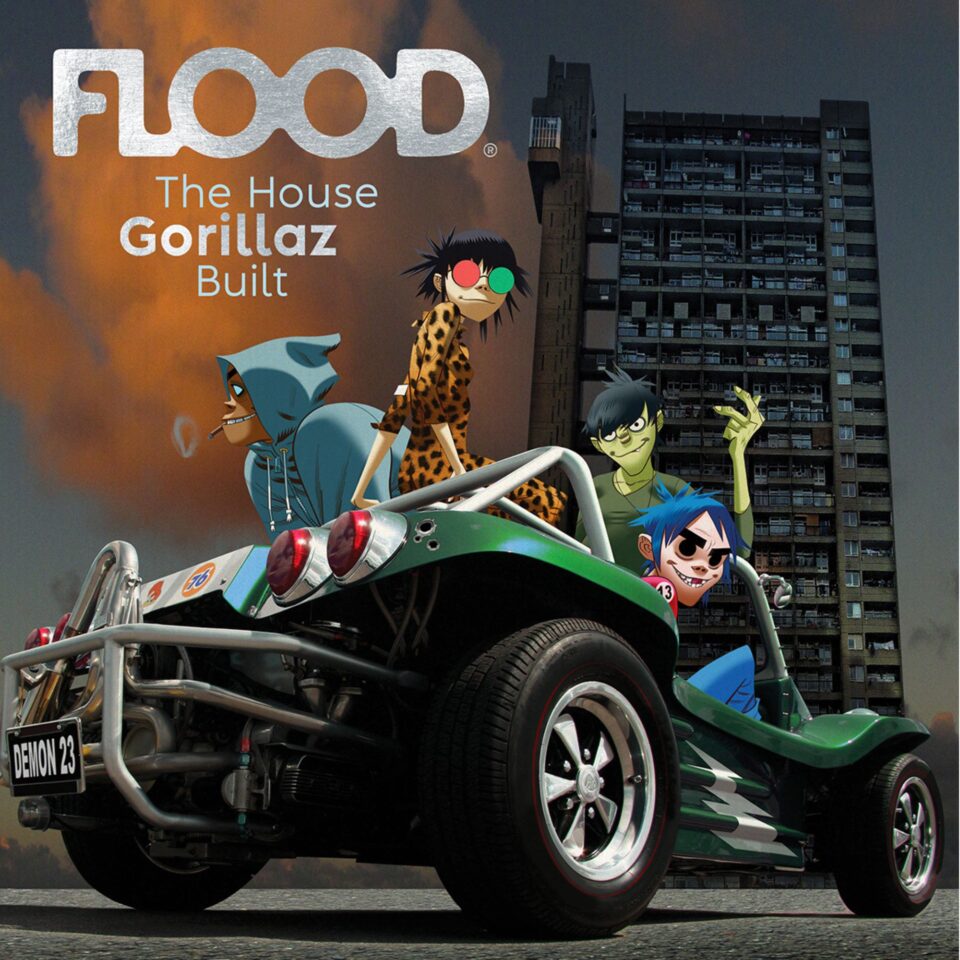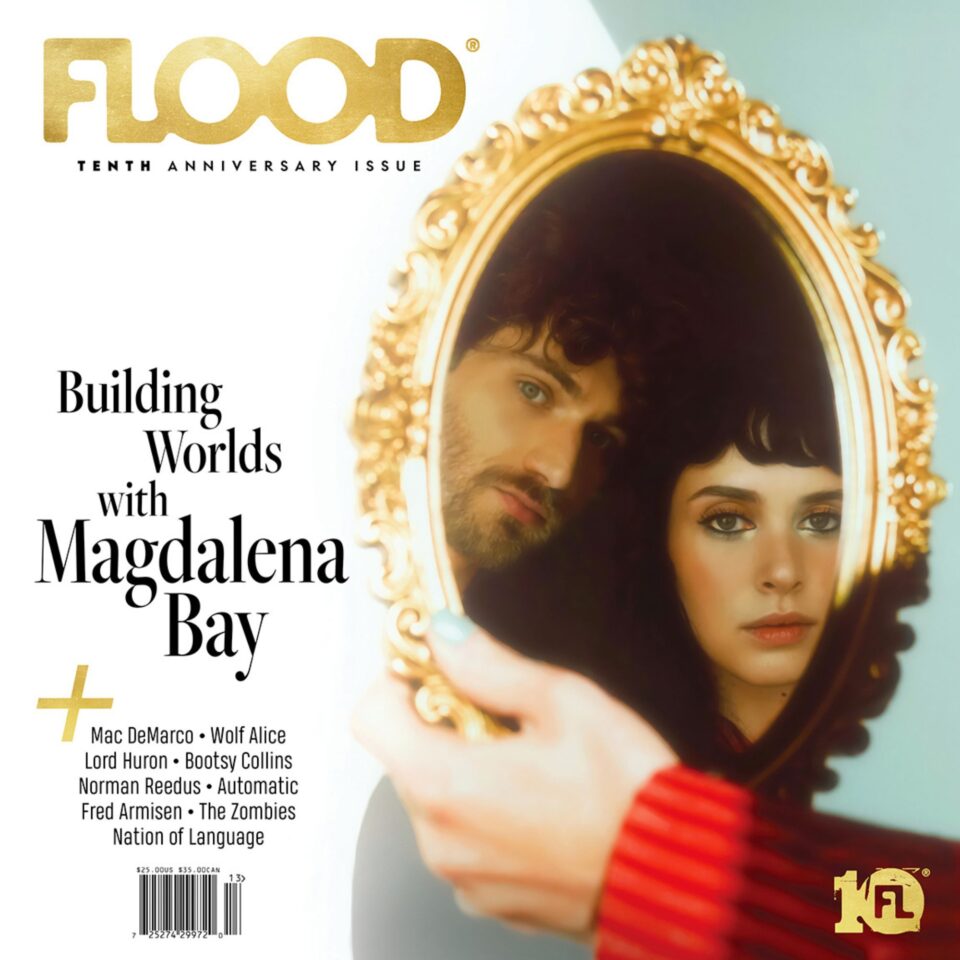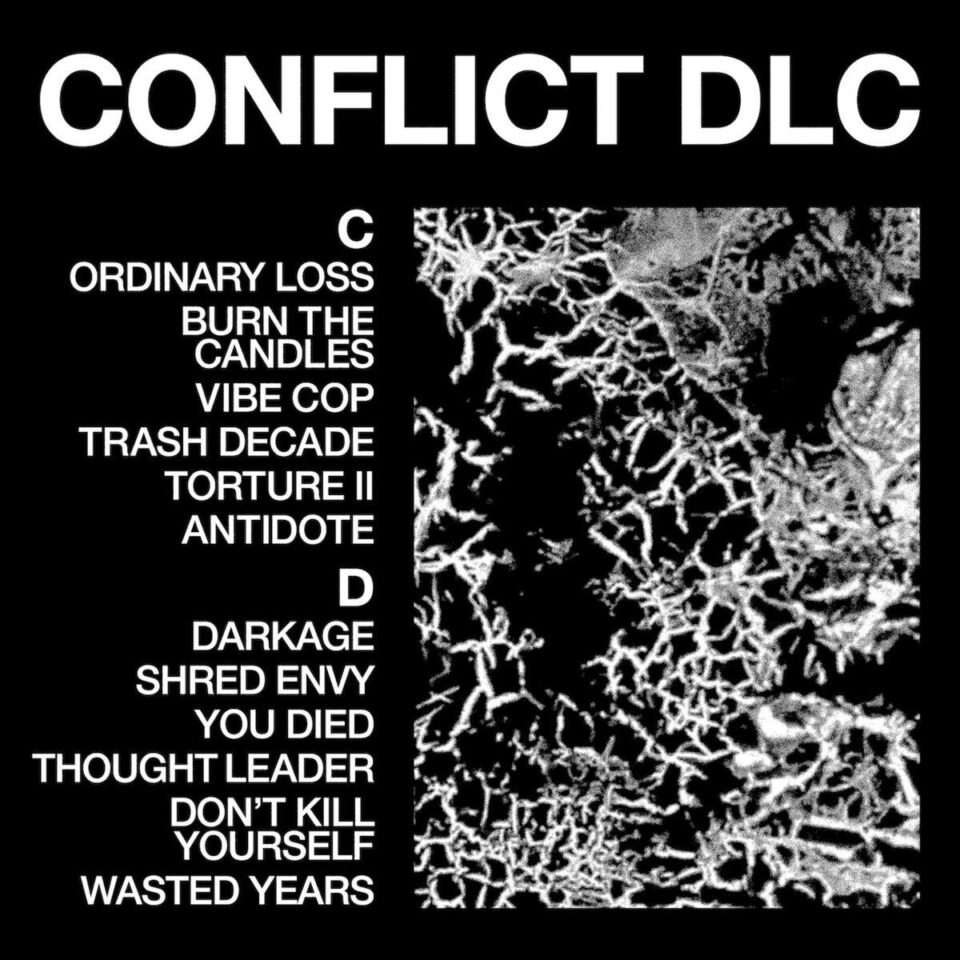With a discography spanning nearly two decades, it’s still always a surprise which Chelsea Wolfe we’re gonna get with every new album. The veteran songwriter has been experimenting with gothic forms at least as far back as her folky early recordings in the late ’00s, and has since ventured into both more ethereal and heavier territory—in fact her last two releases represent this broad range perfectly as she teamed up with composer Tyler Bates for the original score to the 2022 slasher X and metalcore icons Converge for a 2021 collaborative LP.
On She Reaches Out to She Reaches Out to She, Wolfe’s first solo album since 2019’s Birth of Violence, she steps back from the neo-folk and doom metal palettes she’s recently been working with to return to the darkwave influence of 2013’s Pain Is Beauty while amping up the industrial aesthetic across the record. This instrumental near-rebirth echoes the album’s subject matter, which Wolfe describes as a documentation of a “time of undoing.” As she clarifies while discussing the ominously slow-paced “The Liminal,” “[it’s like] standing on the threshold between the old and new. There’s no going back, but you’re not yet ready to step forward. You’re just finding stillness for once in your damn life.”
In addition to sharing how Céline Sciamma’s Portrait of a Lady on Fire influenced one of the record’s 10 songs, as well as producer Dave Sitek’s role in shaping the LP, Wolfe’s track-by-track breakdown provides guidance for She Reaches Out to She Reaches Out to She’s complex emotional journey while also helping gearheads ID an array of synths featured throughout the record. Stream the project and find Chelsea’s words below.
1. “Whispers in the Echo Chamber”
This is a song about cutting cords from patterns, relationships, and situations that you know and have known are toxic for you and are holding you back. It’s about seeking out what you need within yourself instead of constantly reaching outward. It’s a song about self-acceptance, transformation, and rebirth. A lyric like “Bathing in the blood of who I used to be” hints that this process isn’t as easy as it sounds on paper. These songs demanded to be felt and to be lived.
The whispered and swirling vocal textures of this song (ran through producer Dave Sitek’s modular wall) are meant to reflect those persistent intuitive voices that start rising up within you when it’s time to step out of the old and into the new. I love Bryan [Tulao]’s siren-like guitar and wild outro to this song, building the tension.
2. “House of Self-Undoing”
“House of Self-Undoing” is an underworld journey. When you get sober after years of numbing out, you feel, deeply: the moments of joy are euphoric, and the moments of pain are more visceral. But it’s like a call to adventure. Facing life fully present is exciting when you’ve spent half your life half-present.
Drummer Jess Gowrie wrote both the guitar and drum parts for this song, and it became a driving force for my vocals to float over and through as I narrate this underworld journey. The Pulsar by SOMA, along with the ARP synth, are both heavily featured on this album and have some highlighted moments on this song.
3. “Everything Turns Blue”
I had written this song inspired by someone close to me who’d ended a long-term relationship with someone who had not been good for them for a long time, maybe never. Soon after, I realized I needed to leave behind someone in my own life who’d been really harmful for me for a long time as well. So this song is about processing and finding yourself again after making the split. There’s gonna be some high highs and low lows as you begin to navigate life anew.
The tonality of my voice on this recording reflects the message of this song. The burnout of being unsupported by someone who claimed to support me rose to the surface and I was fucking tired.
4. “Tunnel Lights”
Tunnel Lights is a simple song, really—a song about actually living instead of just “getting by.” It’s about waking up to the fact that you’ve been languishing in the dark and understanding that it’s time to start taking steps toward the sparks of light that are calling you out of the tunnel-cave.
This song was originally called “The Chord” because as soon as Ben [Chisholm] hit that initial chord on the piano, we both knew it was something we needed to create a song around.
The vocals on this one are quite raw, as well—a first take late at night after a long day, a reminder to self that the message of the song rings true: the only way forward is through. The SOMA Lyra that Ben performed at the end, which was then sidechained to the bass, creates a sort of passage for the final chorus to travel through.
5. “The Liminal”
The void, the liminal, the threshold, the in-between, and the unseen are recurring characters on this album. Like the dark moon, that void-space can feel unpredictable and looming, but it also holds so much potential, mystery, and excitement.
There’s an inherent grief that comes with letting go of aspects of your life which no longer belong, even if you know that you’ve outgrown them. This song is like standing on the threshold between the old and new. There’s no going back, but you’re not yet ready to step forward. You’re just finding stillness for once in your damn life.
6. “Eyes Like Nightshade”
In Victorian England, some would drop a tincture made with belladonna (a.k.a. deadly nightshade) into their eyes to dilate their pupils—it’s a look. This song pays tribute to a beautiful scene in one of my favorite films, Portrait of a Lady on Fire by Céline Sciamma, in which the two main characters experiment with flying ointment and end up with belladonna eyes. There’s an intimate, ASMR-like quality to that film that I was inspired by in my approach to the vocals on this album, delicate and detailed.
This song grew out of a completely different song, or perhaps it’s the ghost of it. We had a demo called “Red Vein” that Dave built so many new elements for that I felt it had become something new. It became a rhythmic jam that I wrote new vocals for, and then we had fun adding percussive elements to it in the studio, from a rotary phone to various handmade shakers.
7. “Salt”
“Salt” touches on the way our lives lived via technology and our IRL tears coexist. Also, a little bit of magic: salt sprinkled on the doorframe and the windowsills for protection. To be honest, when I was first writing the verses for this, I was writing from the perspective of a character trapped in a video game, like a virtual reality girlfriend who just waits there to please and isn’t entitled to her own privacy. It seemed so lonely and twisted.
The original chorus I’d written fell away one night while I was listening to a rough instrumental mix of what we’d been working on, becoming another transformational moment on the record. The new melodies and lyrics that formed felt so much more resonant and universal. I think this song has the most obvious trip-hop influence—a genre that I grew up on and is still a favorite.
8. “Unseen World”
A descent into the innermost; into the realm that cannot be seen but can be felt. A song about beginning to deprogram from traumatic social norms that have been ingrained in us. Right now is a time of undoing. It’s time to trust in your instinctual inner bell, and in the ever-turning wheel of life.
Another Pulsar- and ARP-heavy song, also featuring the Hydrasynth and C15, deeply layered to reflect the complex journey into that inner realm.
9. “Place in the Sun”
“Place is the Sun” is about finding home in your body after being disconnected from it for a long time. It’s about finding safety in your body in a world that thrives off of making you feel insecure. This is a song about learning how to breathe, and finding joy and ease in singing again. If the lungs are the wings of the heart, to sing is to fly.
This song began as a piano and vocal piece, evolved with Sitek’s MPC, gated vocal samples, and reverbed-out mandolin. At the end of the song there’s light percussion played on the body of a guitar owned by the wonderful Elliott Smith.
10. “Dusk”
“Dusk” is my fantasy-core contribution, a mythical love song. The friends or lovers have gone through hell and back but are still and always united in the end by love, like pottery gone through the firing process, then broken and pieced back together. I wrote “Dusk” while taking pottery classes—which I was not very good at, to be honest, but was inspired by what I was learning and by the various vessels and sculptures surrounding me as I worked.
“Dusk” opens with a Pulsar drone and a sample of my voice used as bass synth. This song began as a guitar demo—I heard Ben playing a pattern and ran to get a recording of it, and we built a song around it. The production has a sweetness about it that matches the energy of the lyrics. “Dusk” was originally a temporary name for the demo as that was the hour it was written, but I got attached to the liminal feeling of the word. There’s a finality to dusk, but it’s also a transitional, fleeting timespace that gives way to the dark so beautifully, with silvery purples and blues gently coloring the sky before the day is done.







